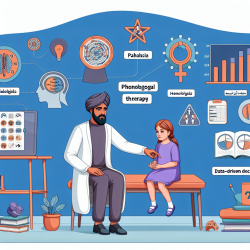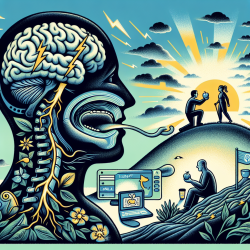Understanding the Role of Rhythm and Timing in Autism
Recent research highlights the critical role of rhythm and timing in the lives of individuals with autism. As practitioners, understanding and implementing these findings can significantly enhance therapeutic outcomes. The study "Rhythm and timing in autism: learning to dance" explores how disruptions in neural connectivity affect movement and sensory perception, impacting the ability to synchronize with environmental and social cues.
Key Insights for Practitioners
The research suggests that individuals with autism often experience challenges in coordinating their movements and sensory perceptions, which can affect their social interactions and daily functioning. Here are some key insights and practical strategies for practitioners:
- Scaffolding Interactions: Use rhythm-based interventions to support self-synchrony and interactional synchrony. Techniques such as music therapy and rhythmic exercises can help individuals with autism improve their timing and coordination.
- Following the Child's Lead: Encourage exploration and self-directed activities. This approach allows individuals to engage with their environment at their own pace, reducing sensory overload and enhancing learning experiences.
- Slowing the Pace: Provide ample time for individuals to process information and respond. This can reduce anxiety and improve comprehension, leading to more meaningful interactions.
- Discriminating Communication: Differentiate between intentional communication and involuntary motor patterns. Understanding these distinctions can lead to more effective communication strategies.
- Single Sensory Mode Focus: Organize information through one sensory mode at a time to prevent sensory overload and facilitate better processing.
Encouraging Further Research
While the study provides valuable insights, it also highlights the need for further research into the dynamic adaptations of individuals with autism. Exploring how rhythm and timing can be mobilized to enhance performance and reduce sensory overload is a promising area for future investigation.
Conclusion
By integrating these strategies into practice, practitioners can create more supportive environments for individuals with autism, fostering better outcomes and more meaningful interactions. To explore the original research paper, please follow this link: Rhythm and timing in autism: learning to dance.










